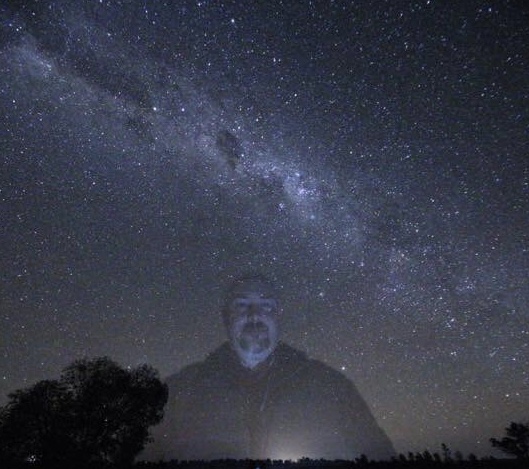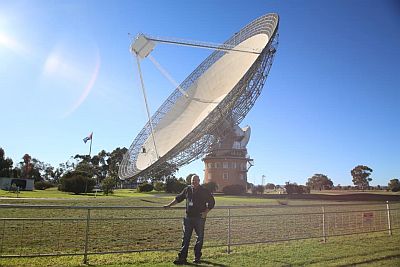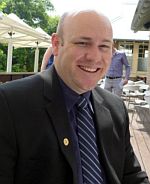GAM 2019 Blog
by Murray Henstock
- Published: Saturday, April 27 2019 03:33

2019 marks 50 years since humanity first set foot on the moon. Watched the world over, this not-so-simple act, captured the imagination of countless millions for the decades to follow.
But the stars have always held our hearts since the earliest of days. Indeed, their observation had vital importance to the daily running of many ancient and modern societies. None more ancient than the astronomical of the First Nations of Australia, The Aboriginal and Torres Strait Islanders, who over the last 65 000 years have utilised their growing knowledge of the stars and celestial mechanics to mark seasons, predict weather and inform their society. The ancient Greeks, Mayans, Egyptians and Babylonians, to name a few, also learned so much over thousands of years of observations, much of which was lost to time and of which we are just starting to relearn.
Once the realm of all citizens, ‘Astronomy’ became the purview of those with access to the ever-evolving required equipment such as large and expensive long range telescopes, digital capture devices and high-tech computers. Although such advances also allowed astronomy itself to evolve and utilise a much wider scope of source information coming in from the cosmos, including radio waves, microwaves and x-rays allowing humanity to see further and, in more detail, than ever before.
Once tiny dots of light were soon realised to be spinning galaxies, blooming nebula and star systems not unlike our own, some of which were millions of light years away. With it came the understanding of looking back into the history of the cosmos. With it came an increased understanding of the fundamentals of physics and universal cosmic mechanics, allowing us to develop future technological advances in many related and unrelated fields of science and engineering. And now for the first time, we have an image of what was once a theoretical construct. A black hole. As our understanding of the cosmos evolved, so too did our global culture.
We can now see further than ever before, right back to the very beginnings of our universe. We can find other planets and other star systems that might hold life-forms unlike anything we can imagine. Our fundamental understanding of who we are as a people and of our place in the cosmos, hinges on our understanding and use of astronomy.
It is fortunate then that astronomy as we know it, is experiencing a growth in interest. From schools to the general public, we are seeing a return to astronomy becoming more accessible once again. As advances in technology continue, quality improves and the cost to produce that quality is reduced, allowing more people than ever before, to gain access to the technology to look skywards for themselves.

There has never been more of an opportunity for all to participate in our collective astronomical journey. Although many of us are decades away from leaving the surface of the planet, technology allows each of us to follow in the footsteps of the astronauts and astronomers who come before. Now we can soar through the solar system viewing planets, comets, asteroids in high definition, from the comfort of our homes or classroom. Now we have access to some of the most powerful telescopes around the planet through online communities such as iTelescope. We have access to data being collected from probes orbiting other planets, such as the Juno Satellite. We have apps for our smart devices such as Stellarium, allowing anyone to look-up in real-time time and receive up to date information, as well as increasing access to virtual reality, augmented reality, and planetariums to help recreate cosmic environments at will.
Regular citizens are contributing to scientific advancement. School programs are making use of incoming planetary radio data and helping agencies such as NASA program satellite trajectories. Amateur astronomers are making discoveries leading the professionals to re-focus their efforts. Engineers, computer programmers, visual artists, musician, communication experts are all playing their role in bringing astronomy back to the people.
I have watched the wonder appear on the faces of those young and old, who have never seen a planet like Jupiter or Saturn up close through the eyepiece of a reflector telescope. I have seen the excitement of the first glimpse of another galaxy. I have seen hundreds of community members gather around telescopes, share stories with each other and connect over our universal love of the stars.
There is so much more to learn and more of us that look up. The more of us who embrace our curiosity and seek those answers in the stars above, the greater our future will be.
| Murray Henstock is a full time Science and STEM Educator with the Department of Education in NSW Australia. He began his journey with Astronomy early in his career with a gifted telescope and a passion for the unknown. Over the years Murray has continued to explore his interests in science, space and astronomy not only attending Space Camp in the US and Turkey but also under taking the Galileo Teacher Training Program and training in the use of the Goldstone Apple Valley Deep Space Radio Telescope to help bring astronomy closer for his students and the local community. Murray has hosted several community Astronomy Nights with the support of local Astronomical Societies allowing students, friends, family and community members to view planets, nearby galaxies and comets whilst interacting with some of the latest technology putting astronomy in the hands the general public. |  |






